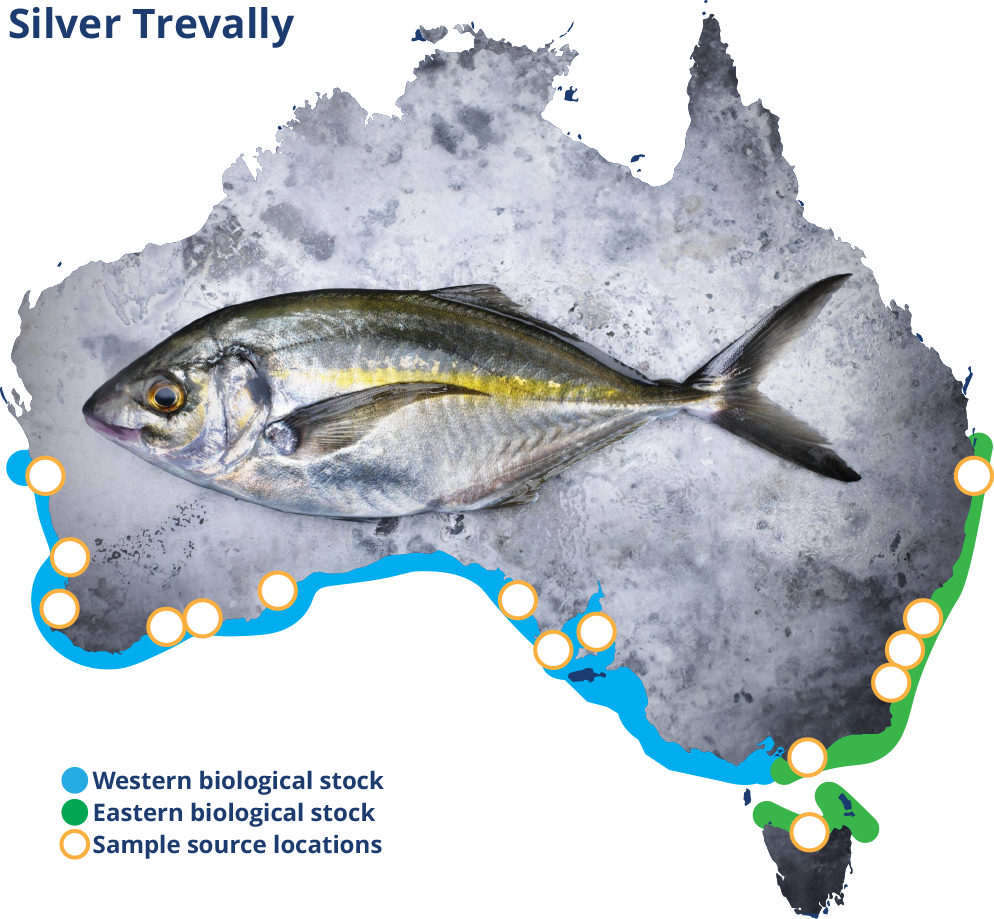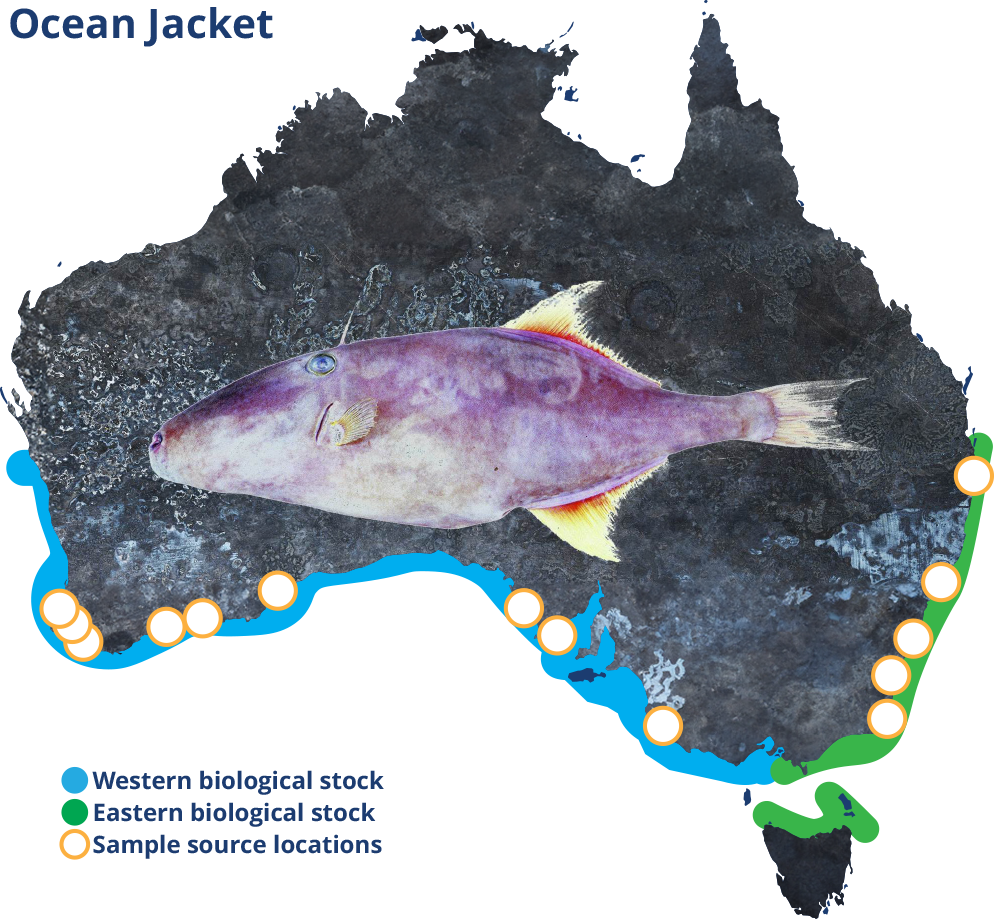The discovery of eastern and western biological stocks of Silver Trevally (Pseudocaranx georgianus) and Ocean Jacket (Nelusetta ayraud) is set to align reporting and management practices across jurisdictional boundaries for both species.
Commercial and recreational fishers have targeted Silver Trevally and Ocean Jackets around Australia’s southern coastline for many decades.
These species have been managed separately in each of the fishery jurisdictions where they’re caught: NSW, Victoria, Tasmania, South Australia, Western Australia, and Commonwealth waters.
However, new FRDC-funded research (2021-009) shows each species has just two major biological stocks – an eastern and western stock – says Dr John Stewart, from the NSW Department of Primary Industries and Regional Development (DIPIRD).
John had led the research, which he says has been a “true national collaboration”, involving fisheries agencies across six jurisdictions, with more than 20 contributing scientists.
And the findings could help to align reporting and management practices for the two species based on their biological stocks rather than jurisdictional boundaries.
Ear bone and tissue samples
Two sampling techniques were used in the analysis of stocks. The first used fish otoliths (ear bones) and was undertaken by the University of Adelaide, with 940 Silver Trevally and 451 Ocean Jacket otoliths examined.
The second was a genetic technique – tissue sampling and DNA sequencing – undertaken at Flinders University in South Australia. There were 929 tissue samples of Sliver Trevally and 465 Ocean Jacket samples sequenced.
“Cross-referencing the results of the two techniques helps to verify our results,” explains John.
“The genetic data provides information about stock structure across a long, evolutionary scale. The otolith characteristics give us an idea about stock structure across the time frame of each fish’s life.”
Overlaying the results showed two discrete stocks for both species, one western stock and one eastern stock. The natural boundary for the stocks of both species appears to be Bass Strait, as it is with several other species such as Gemfish (Rexea solandri), Blue Warehou (Seriolella brama), and Blue Mackerel (Scomber australasicus).
Silver Trevally from New Zealand were also sampled and are confirmed to be an entirely separate stock.
“At a broader scale, our results suggest we should move away from jurisdictional assessments to biological stock assessments,” says John.
The western biological stock of Silver Trevally is fished in Western Australian, South Australian and western Victorian waters. The eastern stock is fished in NSW, Commonwealth, eastern Victorian and Tasmanian waters (Figure 1).

The western biological stock of Ocean Jackets is fished in Western Australia, South Australia, the Commonwealth Great Australian Bight Trawl, and western Victorian waters. The eastern biological stock is fished in NSW, the Commonwealth Southern and Eastern Scalefish and Shark Fishery, and eastern Victorian waters (Figure 2).

Collaboration for better science
John highlights the latest joint assessment of the eastern stock of Silver Trevally that has been undertaken following collaboration on the stock structure research.
The new understanding that the Silver Trevally stock on the east coast is shared across Commonwealth and state fisheries has resulted in collaboration between CSIRO and NSW DPIRD scientists to produce a new stock assessment that integrates biological and catch data for the eastern biological stock.
“Pooling the information across the whole biological stock results in better science, and much greater confidence in the stock assessment. It also helps us to do better by the stock, rather than just focusing on our own backyard,” says John.
Reporting drives research
FRDC Research Portfolio Manager, Toby Piddocke, says understanding stock structure is essential to sustainably managing stocks, taking into account reproductive rates, natural mortality and the total volume of fish being taken.
The results of this project will feed into improved national reporting through the Status of Australian Fish Stocks Reports (SAFS) that aims to drive improved science in monitoring and assessment in conjunction with transparent public reporting.
Toby says that SAFS helped highlight the gaps in information around the stock structure for Silver Trevally and Ocean Jacket, leading to this research project.
“One of the roles of SAFS is to identify knowledge gaps or data deficiencies, where we may need to do some research to get a better picture of stocks. It will help these two species move towards reporting at that biological stock level, which is generally what we aim for in SAFS,” he adds.
Related FRDC Project
2021-009 Identifying biological stocks of Silver Trevally and Ocean Jackets for assessment and management





